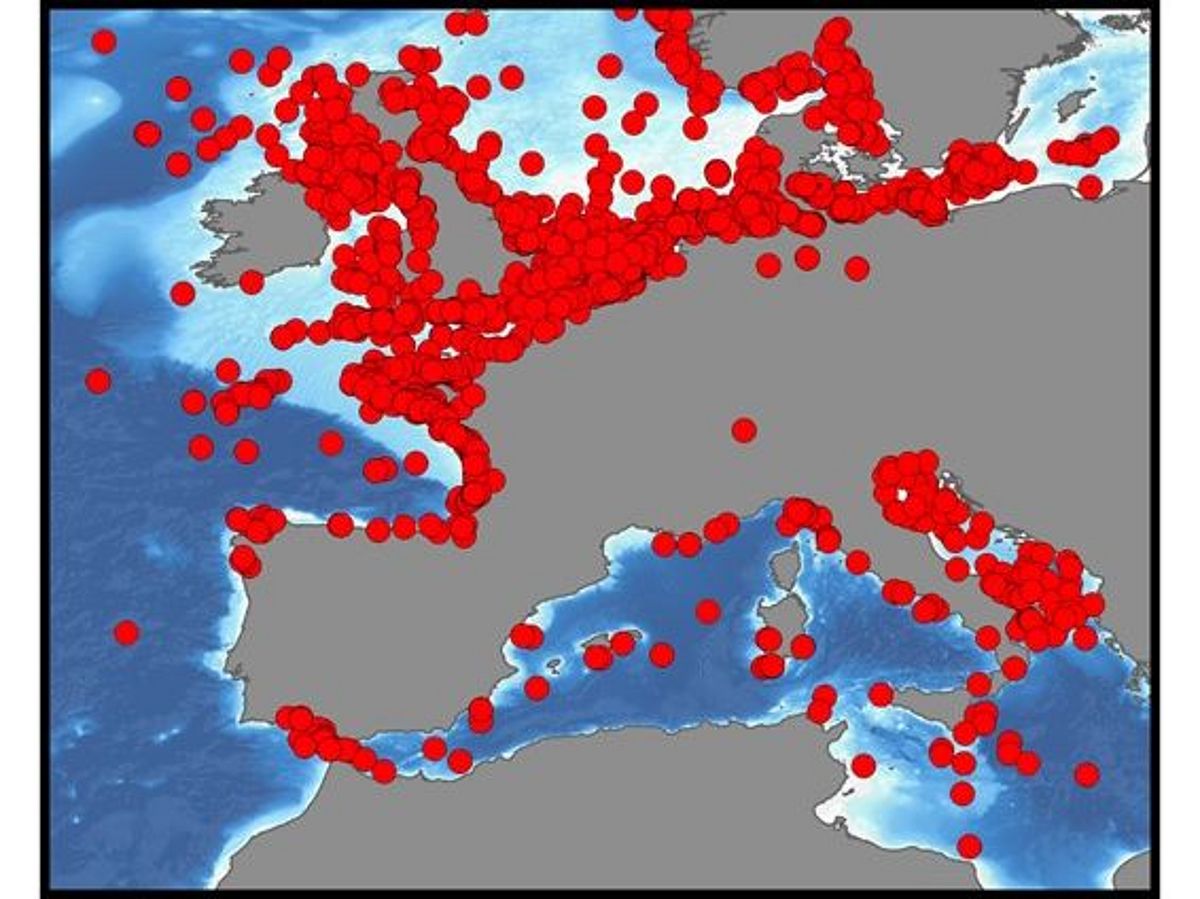Background to the Project

European waters are strongly contaminated with underwater munition (UM). The majority of UM originates from dumping activities during and after WWI and WWII to eliminate large quantities of war remnants, including conventional and chemical weapons. The UM includes hundreds of thousands of de-fused shells, mines and aerial bombs. Furthermore, unexploded ordnance, sunken underwater mine barriers, and wrecks of military vessels carrying munitions contribute to the problem. It is estimated that the German portions of the North Sea and Baltic Sea alone contain approx. 1.6 mio. tons of UM, which can be often found in relatively shallow waters, in areas of fishing activities, or near major shipping routes (Figure 3). The dumping site Paardenmarkt is burdened with 35,000 tons of chemical munitions one mile off the Belgian coast and close to a major port. In addition, about 40,000 tons were dumped in Bornholm and Gotland Deeps, and 35,000 tons of conventional munition at Kolberger Heide. Many dumping operations were carried out secretly or the munition was thrown overboard already during transport. Hence, there is a lack of information regarding the coordinates and nature of UM in our seas.
UM represents a serious threat to the marine environment, human activities and seafood provision. Explosion risks apply to increasing ship traffic and water sports but also to dredging, aquaculture and offshore work, e.g. wind farm construction, cable and pipeline laying. European offshore wind investments exceeded €9 billion in 2018, and UM encounters have caused delays and additional costs in pipeline projects exceeding tens of mio. €. Munition shells corrode over time, allowing release of munition compounds (MC). Explosive materials undergo slow alteration upon seawater exposure, making them more sensitive to detonation after decades on the seafloor. Chemicals associated with conventional explosives and chemical warfare agents (CWAs) have cytotoxic, genotoxic and carcinogenic properties. Several studies have shown that UM can act as habitats for marine organisms leading to an increasing input of MCs and CWAs into the marine food chain up to human consumption. Therefore, safe, reliable and cost-effective localization and clearance of UM in coastal waters is ecologically, economically and socio-politically important.
Conventional munitions represent over 90% of UM and consist of metal containers filled with explosives, propellants and pyrotechnics. Most common explosives are trinitrotoluene (TNT) (90w%), Royal Demolition Explosive (RDX) (5w%), and dinitrobenzene (DNB) (<10w%) as propellant. Chemical warfare agents in UM include mostly sulfur mustard (80%), arsenic based agents such as Lewisite, Adamsite and Clark (15%) and other agents, such as chloroacteophenone, Tabun and Phosgene. As a result of degradation, MCs occur both as parent compounds and transformation products.
Search methods include geophysical techniques, discrete sample collection with subsequent lab analysis, and chemical sensing technologies. Geophysical techniques can locally map the seafloor and are the most common survey tool for the military and EOD companies, but require further ROV identification. Optical inspection by ROV can accurately identify individual objects, but requires intensive expert guidance and is strongly limited by visibility.
Chemical detection of explosives and CWAs is the most direct approach to assess UM presence, as shell/container corrosion and release is common after >70 years on seafloor. For this task, lab-based methods offer outstanding detection capabilities, but require discrete sampling as well as intensive preparation and analysis.
A next logical development in chemical observations of MCs would be real-time and in situ (underwater) analysis. This is requested by EOD companies and would greatly facilitate EOD operations through real-time provision of chemical data alongside geophysical data, and allows targeted sampling of munition sites using ROVs.
We will develop approaches for on-line, real-time and in situ detection based on technologies for detection of MCs and CWAs under atmospheric conditions, as used in e.g. airports. We will utilise membrane‑inlet mass spectrometry (MIMS) in combination with resonance-enhanced multiphoton ionization (REMPI).
The newly developed chemical sensing approaches will be deployed on vessels for on-line measurements, but also on an ROV, with method validation of waters and sediment porewaters using existing lab-methods. Underwater components will be produced for the ROV deployment, including a sediment sampling system.



